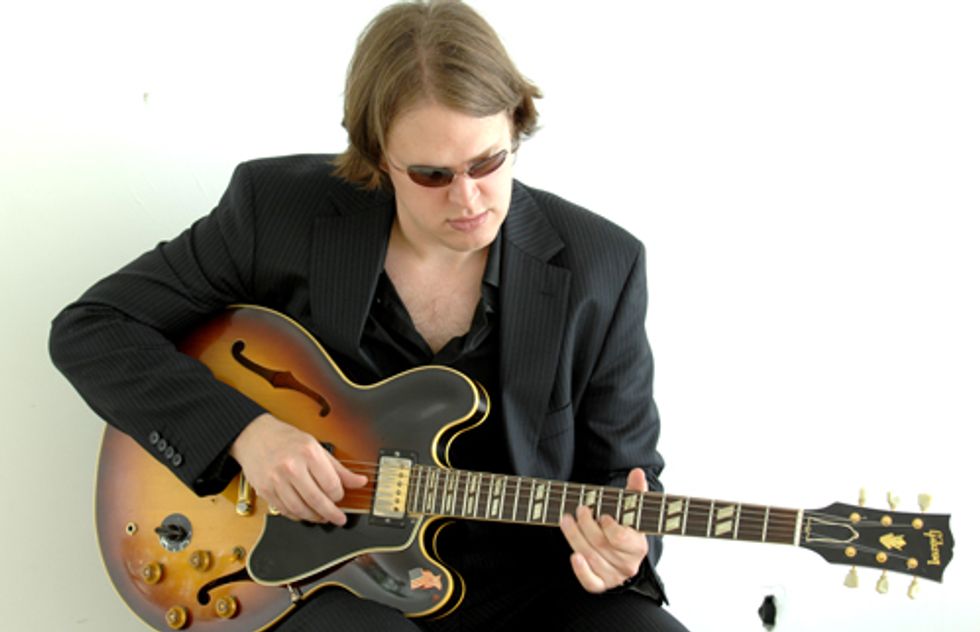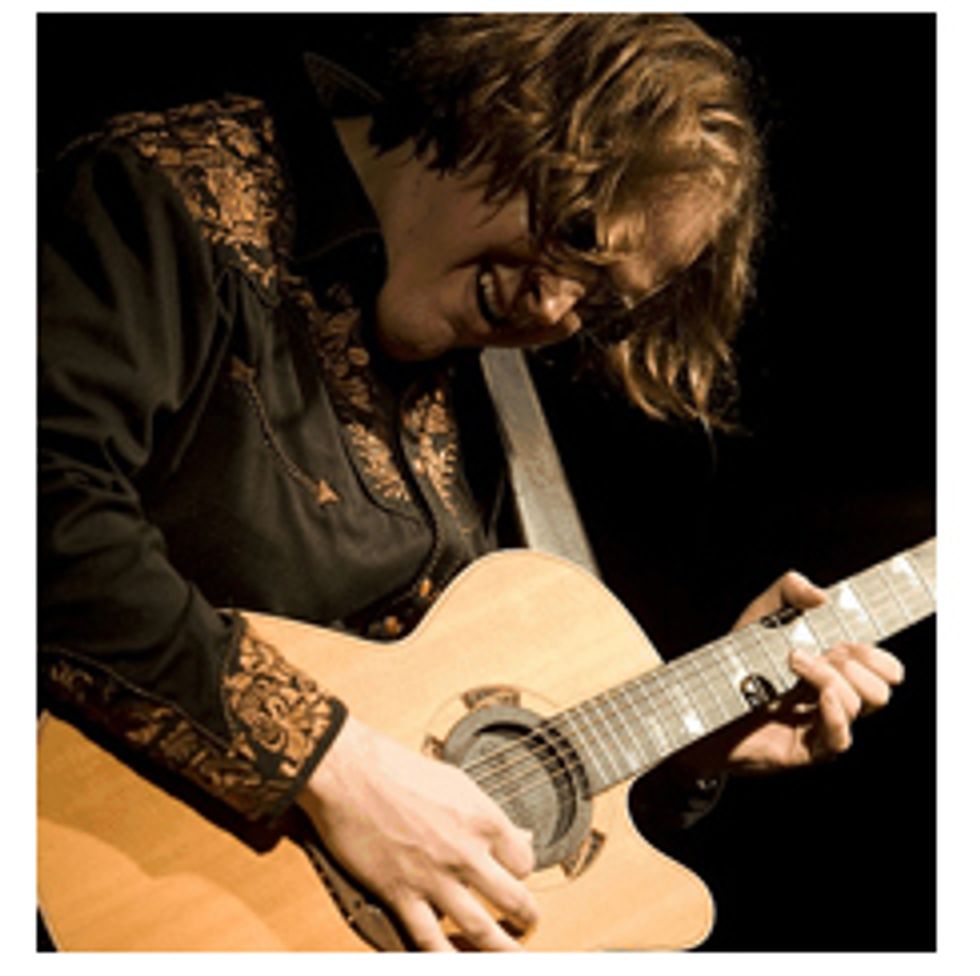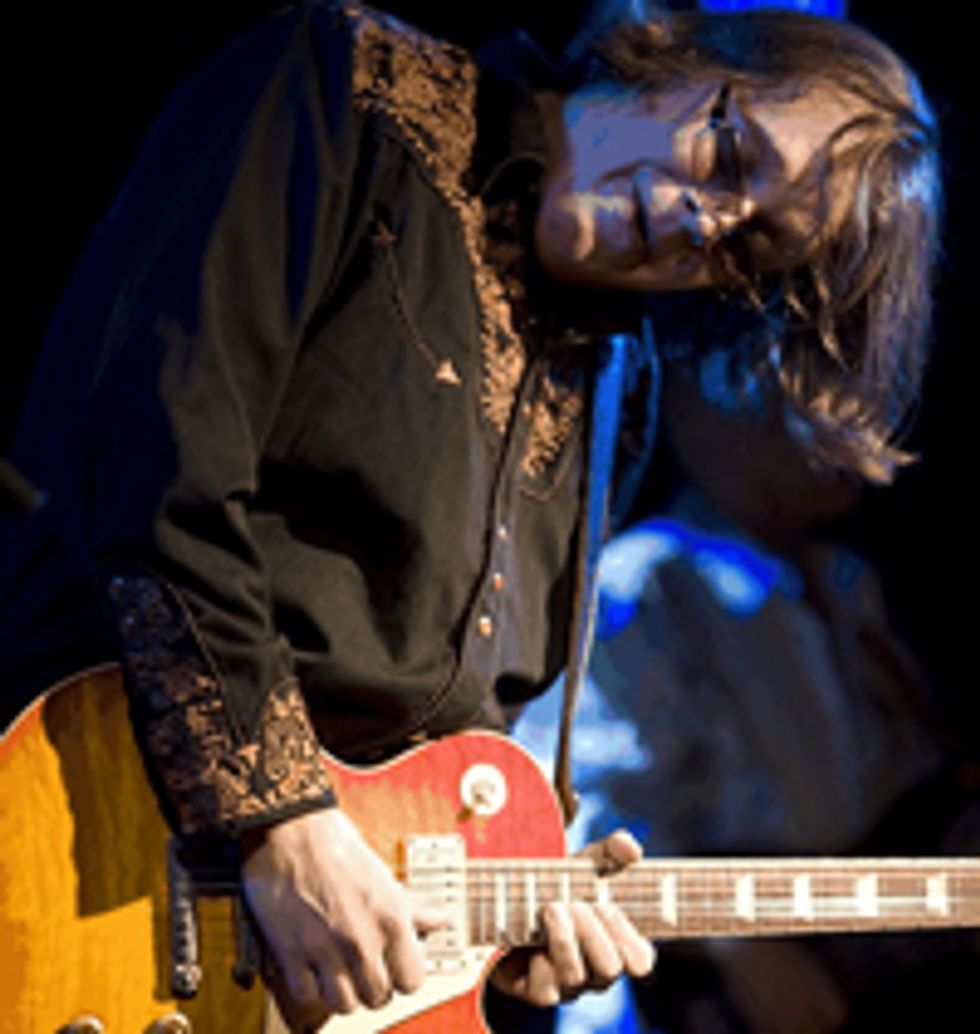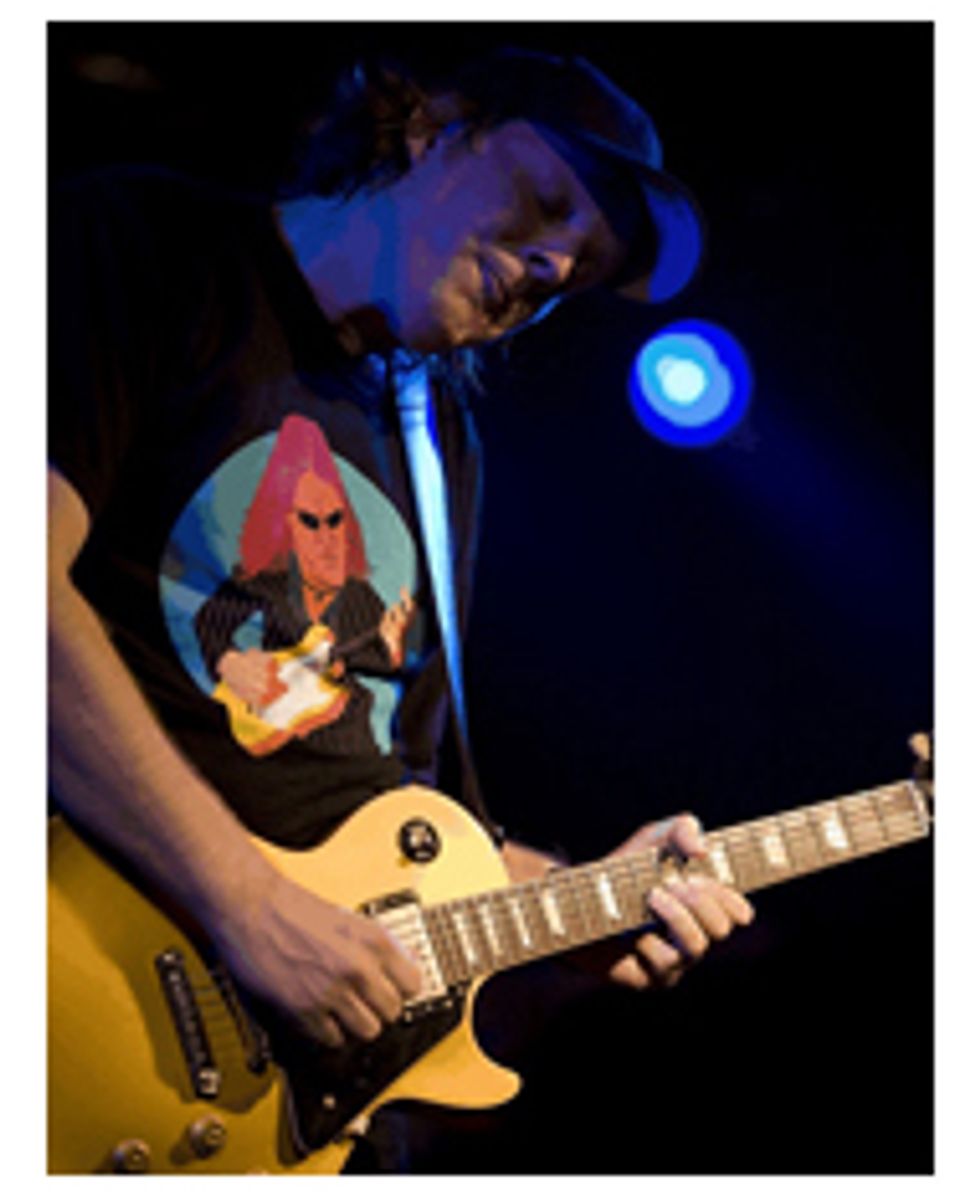The critically-acclaimed, fan favorite with the soulful licks and to-die-for tone isn’t just a phenom anymore. Joe Bonamassa hasn’t been for a while now. Having toured since the early ‘90s, he is what you would call road-tested. Having released seven albums, all of which reached #1 or at least the top ten in Billboard’s blues charts, he is what you call a studio veteran. Most importantly, he is what you would call a bluesman.
There are phenomenal players out there who cut the occasional blues album -- and then there are bluesmen who cut albums. To call Sloe Gin, Bonamassa’s latest, a blues album is redundant.

In fact, Sloe Gin, goes where most blues albums rarely go these days – the place where it all began: acoustic blues. At the same time, hats are tipped to rockers who advanced the blues, and boundaries are pushed. This is what’s most interesting about Bonamassa and it’s very apparent on this album. Despite his chops having won him total respect by the blues community, stores like Best Buy don’t put him in the Blues section. There’s no denying the blues cred is there but Bonamassa brings so much more to the table.
We caught up with Bonamassa and talked about his ground-breaking album, the state of the blues and of course, his killer tone.

You go back and forth between acoustic and electric on this album. If you were in a different situation I’d ask you how you convinced the powers that be to let you do that.
That’s the beauty of owning your own label. To me it’s important to move the boundaries a little, as far as what people consider blues and break down some of those preconceived notions of what it really is. You know, Led Zeppelin is just as much blues as Robert Johnson. Of course, some blues purists will take my picture and throw darts at it [for saying that]. Eleven of the same songs gets boring to anybody.
What happened to blues albums?
One- the industry is changing; people are downloading records. Two- people are not making records that drive people to the stores to buy them. For me, to have some acoustic music on there gives it a different flavor and appeals to a broader audience. It’s easy to strap on a Stratocaster and try to out-Stevie Ray the umpteenth guys who are trying to out-Stevie Ray each other. To me, its like- is there a song with a melody? Is there a song a woman would enjoy? That’s important. For a long time the blues have ignored 50% of their audience by catering to just guys.
This album really makes me stop and think about its production values. There are so many things going on. For example, the lead track’s Zeppelin-eque sonic quality hits you right in the chest.
I can’t take credit for that. That’s [engineer] Kevin Shirley. Kevin’s such a brilliant producer and such a great musical mind. He comes from a different background. He was predominantly doing more heavy records, you know – Zeppelin remixes, Black Crows, Iron Maiden – so he came to the table with a very different perspective. He was coming up with stuff I would never think of in a million years. Like the song, “Sloe Gin;” I never would have thought of that, even if I had heard it before I would have never thought, ‘Let’s see what you can do to make it not only viable but the title track, too.’
There are so many great, different flavors on this album. How did you approach that in the studio?
We did two separate sessions for the album. In January we did a full-on, all acoustic thing – all the acoustic tracks and “Ball Peen Hammer.” Then we came back and did all the electric tracks. And we didn’t really know how it would work – if we should do a side A/side B thing or if going back and forth would make it disjointed. We went through several sequences and even had to burn about 25,000 [CD] jackets when we made the last change. [laughs]
Did you get it right?
I really like the way it turned out. I wanted to make an album you could listen to all the way through and have it make sense at the end. Unfortunately, people cherry-pick songs and download them today, missing the feel that albums are designed with. If you took Thick as a Brick [Jethro Tull] and listened to those songs out of order it would be total chaos as a piece of art and that’s kind of the thinking I was going with – let’s try to make this thing so that it flows from start to finish.

Let’s talk gear. You mostly used a ’59 Historic Les Paul for the electric-driven cuts on this album. Can you take me through that rig?
Sure. I have four Historic ‘59s of varying degrees of flame toppage but I use one in particular a little more. . . That main one I use is a 2003. And it has original Bumble Bee caps. To be honest with you, I’m not really a fan of people tearing up Melody Makers from the ‘50s to rip 500k pots and Bumble Bee caps out of ‘em, but someone had already done this to what was an unusable guitar that my dad bought. So, we put a legitimate set of ’59 pots and Bumble Bee caps in this Les Paul and I put in a set of PF humbuckers from 1953. It just opened up the guitar, giving it that very 800 Hz to 900 Hz very human quality to it. For me the moment of truth on any Les Paul is when you go to the G string, B string and high E string – does the bottom end stay tight and bright. This one does and I use it for that particular reason.
Your D-28 sounds amazing. How’d you record it?
We used a Neumann 87- the studio had a newer one. We used it through a 1083 Neve and basically an 1176 UREI compressor. We were going for that early Crosby, Stills & Nash tone. Moderns have a tendency to get a little scooped out in the mids so you don’t really hear all the notes but that particular D-28 doesn’t have a ton of bottom and it doesn’t have a ton of top, which of course bluegrass guys would pick it up and say, ‘Oh, this is a crappy one,’ but for a recording guitar it’s very direct. I think it’s a ’57 or a ’58.
Pick up anything new lately?
Yeah, I’ve got a Gibson Custom Shop prototype- it’s called a Skylark. It’s based on a late ‘50s – early ‘60s Korina lap steel. It’s shaped like a Les Paul and it has the old Flying V logo on it, but the Skylark headstock and the ’59 profile neck. The cool thing is, all the frets are numbered which is really wild.
| “I think people are getting back to that mentality of ''Let me work on my playing first'' and then finding gear to augment that and make it easier.” |
You’ve seen a lot of changes in the guitar industry over the years, plus you know a lot with your dad owning a music store and all – what excites you right now?
You know, to me what’s exciting is seeing guys like Jeff Beck plugging straight into a JCM2000 with pretty much a stock Strat he’ll just make you cry, you know. I just saw Johnny Winter; we just did a show with him in Dallas. He’s still a guy plugging the Firebird straight into the amp and it sounds like Johnny Winter. I think people are getting back to that mentality of ‘Let me work on my playing first’ and then finding gear to augment that and make it easier. It’s gotten back to the basics of -- can we just buy a little Fender Champ and a Les Paul and make it sound like something. That’s the new thing.
Amp-wise, this guy Peter Van Weelden from Holland is building some great Marshall-type stuff, some Dumble-type stuff. Alan Phillips of Carol-Ann Amps, the guys at Two-Rock are making some nice stuff and Marshall – I like their new vintage modern thing. I love the clean channel on that. But again, all this good stuff is about getting back to basics.

What’s next on your horizon?
Next year we’re going to start working on the World Blues Album. We’re going to six continents to record with indigenous musicians playing the blues. I want to show people how the blues are interpreted by others all over the world. It’s a pretty ambitious project, something no one has ever attempted before so we’re going to try to be the Magellan’s and sail around the Horn without killing ourselves!
Joe Bonamassa''s new album, Sloe Gin, is in stores now. He is currently touring the Midwest and will hit the East coast by mid-November. He is scheduled to tour India and Europe starting in Februrary.
For more information:
jbonamassa.com
Photos: Ross Halfin, Eckhard Henkel










![Rig Rundown: Russian Circles’ Mike Sullivan [2025]](https://www.premierguitar.com/media-library/youtube.jpg?id=62303631&width=1245&height=700&quality=70&coordinates=0%2C0%2C0%2C0)












![Rig Rundown: AFI [2025]](https://www.premierguitar.com/media-library/youtube.jpg?id=62064741&width=1245&height=700&quality=70&coordinates=0%2C0%2C0%2C0)




















 Zach loves his Sovtek Mig 60 head, which he plays through a cab he built himself at a pipe-organ shop in Denver. Every glue joint is lined with thin leather for maximum air tightness, and it’s stocked with Celestion G12M Greenback speakers.
Zach loves his Sovtek Mig 60 head, which he plays through a cab he built himself at a pipe-organ shop in Denver. Every glue joint is lined with thin leather for maximum air tightness, and it’s stocked with Celestion G12M Greenback speakers.











